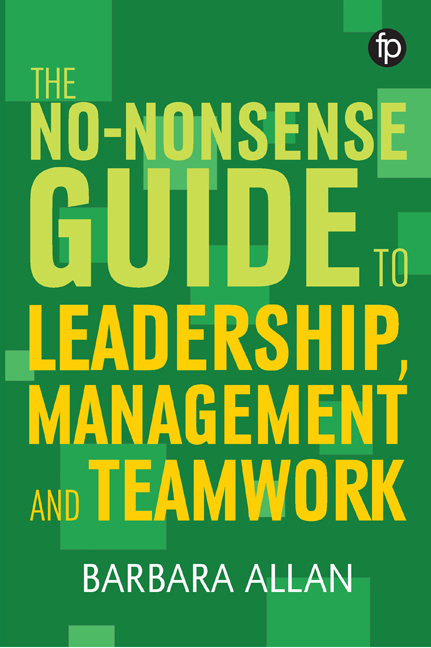Book contents
- Frontmatter
- Contents
- List of figures
- List of tables
- List of case studies
- Acknowledgements
- 1 Leadership, management and teamwork today
- 2 Getting started
- 3 Strategic leadership
- 4 Confident leadership and management
- 5 Leading and managing your team
- 6 Managing the work
- 7 Project management
- 8 Introducing and managing change
- 9 Communications
- 10 The people side of management
- 11 Managing money
- 12 Lifelong professional development
- Index
5 - Leading and managing your team
Published online by Cambridge University Press: 01 June 2019
- Frontmatter
- Contents
- List of figures
- List of tables
- List of case studies
- Acknowledgements
- 1 Leadership, management and teamwork today
- 2 Getting started
- 3 Strategic leadership
- 4 Confident leadership and management
- 5 Leading and managing your team
- 6 Managing the work
- 7 Project management
- 8 Introducing and managing change
- 9 Communications
- 10 The people side of management
- 11 Managing money
- 12 Lifelong professional development
- Index
Summary
Introduction
The aim of this chapter is to provide an overview of different approaches to managing and leading teams. The chapter starts with guidance for new managers and leaders on getting to know the team and establishing working practices, followed by a section on team development. There are many different types of teams and these are explored as follows: working in partnership, virtual teams and volunteers, including the special case of crowdsourcing. The chapter concludes with the topic of succession planning.
Whatever the job title, e.g. director, manager or supervisor, it is highly probable that the role will involve leading and working with a team. This team will help you to achieve your organizational goals and so it is vitally important that you spend time thinking through and working out how you will lead them. New leaders, managers and supervisors may experience many different kinds of teams, including: well established or new teams; single- or multi-professional teams; and highly effective or dysfunctional teams. A wide range of tools and techniques are available for working with teams and this chapter provides guidance on them.
Initial communications
As a starting point for working with a team, it is helpful to reflect on the following questions.
• Do you know your intended team goals and outcomes?
• What is the history of the team?
• Have team members the appropriate knowledge, skills and attitudes?
• Have you got the right type of working environment?
• Have you a team that works together?
• Have you appropriate support?
• Have you appropriate spaces for teamworking?
The first time you communicate with your new team is very important, as it will help to set the tone for all future communications. Many people send an introductory e-mail before they start in their new position and use it as an opportunity to share information about themselves as well as giving some indication of future working practices. Remember that these initial communications will be forensically analysed by your new team, who may be trying to read more into them than you intended.
Whatever your situation and even if you have already worked with team members in the past it is important to have one-to-one meetings with each person and these meetings may be focused around the following four questions, which your new colleagues may find helpful to receive in advance of your meeting.
- Type
- Chapter
- Information
- Publisher: FacetPrint publication year: 2019



